Planning to travel to Indonesia in the Summer or Christmas? Looking for the best time with less crowds? If you are planning your trip to Indonesia, but still not sure when is the best time to travel to Indonesia, in this post we help you solve all your doubts.
Although Indonesia is an excellent travel destination all year round, offering memorable experiences for all types of traveler, you could roughly say that the best time to travel to Indonesia is between April and October.
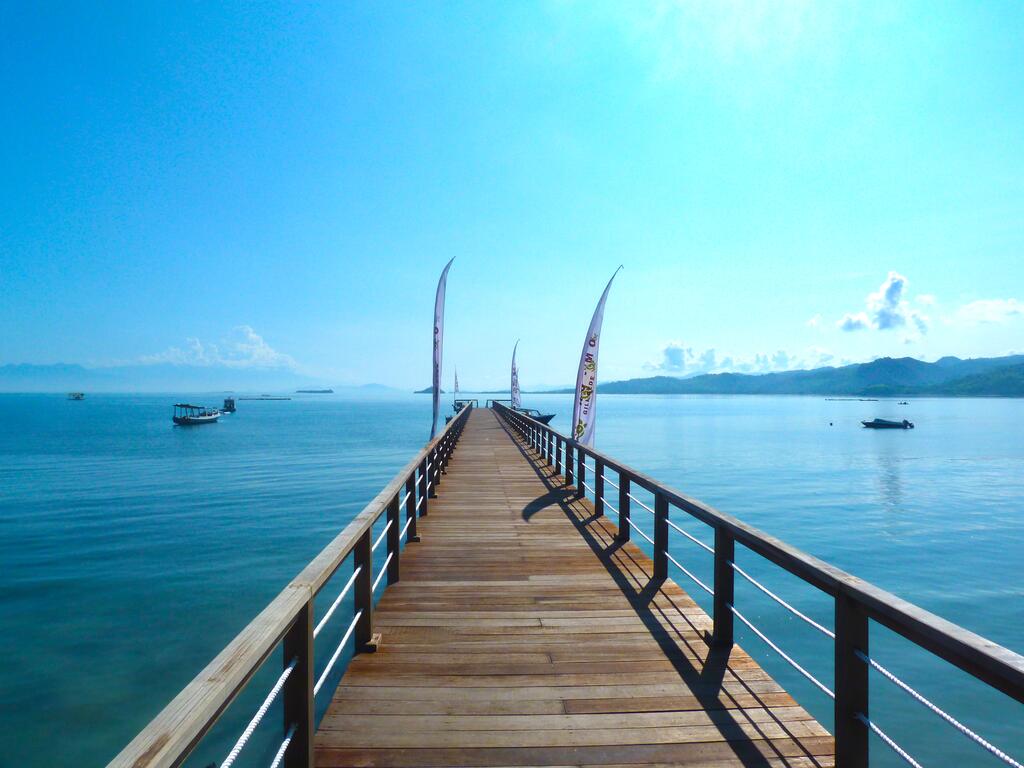
“ The best time to travel to Indonesia is between April and October”
In terms of tourist seasons, the best time to travel to Indonesia is during the shoulder season, which includes the months of May, June and September. During these months, the temperature is very pleasant and the tourist areas are less crowded.
The off-season in Indonesia, that extends from October to April, is also the rainy season. During these months, you can find some accommodation deals, and you can make the most of the diving season in Papua and the Moluccas Islands. If you are not afraid of rain, the downpour tends to happen during the afternoons, so you can spend the rest of the day visiting the country without an umbrella.
During the high season of Indonesia, particularly the months of July and August, the country receives the largest wave of tourists. For this reason, prices can increase considerably. Plus, you’ll need to be prepared to deal with crowds when visiting some of the most popular tourist sites.
If you are looking to travel to Indonesia in a more relaxed way and with less influx of tourists, the months of April to June and september to October are ideal and prices are a little lower.
If you have to travel in “high season” but want to avoid the crowd of tourists, don’t worry, there are many less crowded places in Indonesia waiting for you to explore! 🙌

Indonesia is found in the tropics and considered equatorial, temperatures are fairly stable throughout the year. The average temperature in Indonesia is around 25-30 degrees Celsius, and somewhat humid.
Indonesia only has 2 seasons: dry and wet, from April to October normally drier than from November to March, which tends to be wetter. However, because the size of Indonesia is very large, the rain does not apply at the same time throughout the country, nor will it rain throughout the period. In some areas, the rainy season means 2-3 hours of rain in the morning or afternoon.
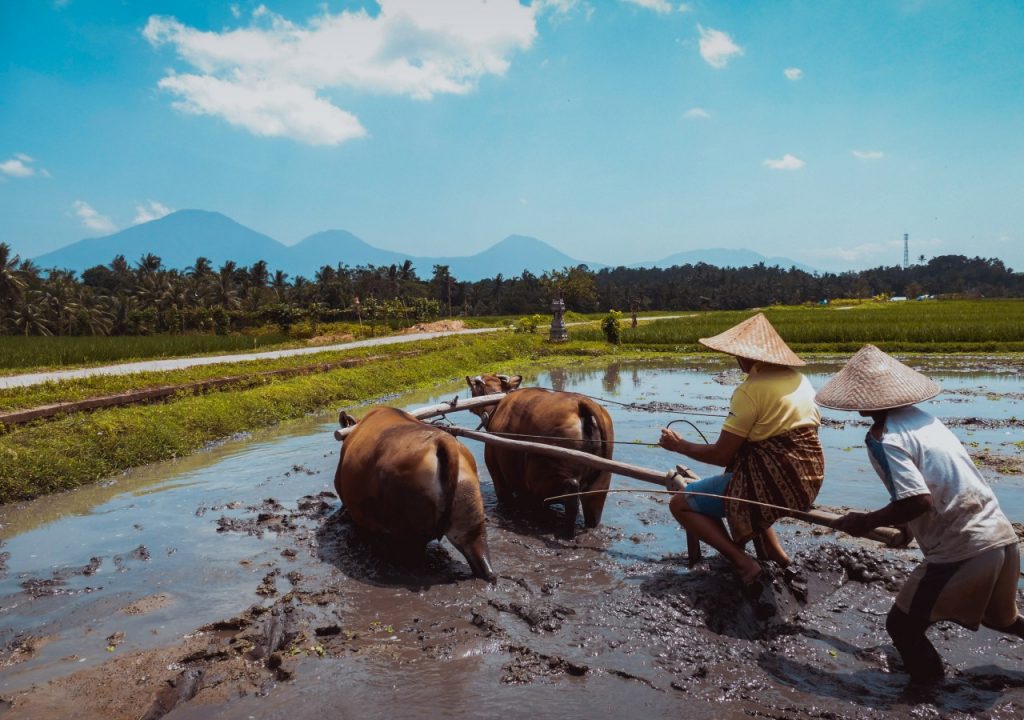
The climate in Indonesia can be divided into two seasons, the wet season and the dry season, with warm tropical temperatures averaging 28C all year round during the day.
In most regions, the dry season extends from May to September.
The months of the dry season are the most popular time to visit Indonesia.
The wet season is between October and April, with precipitation in the form of short and heavy downpours.
There are some regional exceptions and northern Sulawesi experiences some rain in June and July. Temperatures remain fairly constant throughout the year with averages of 28C throughout the region.
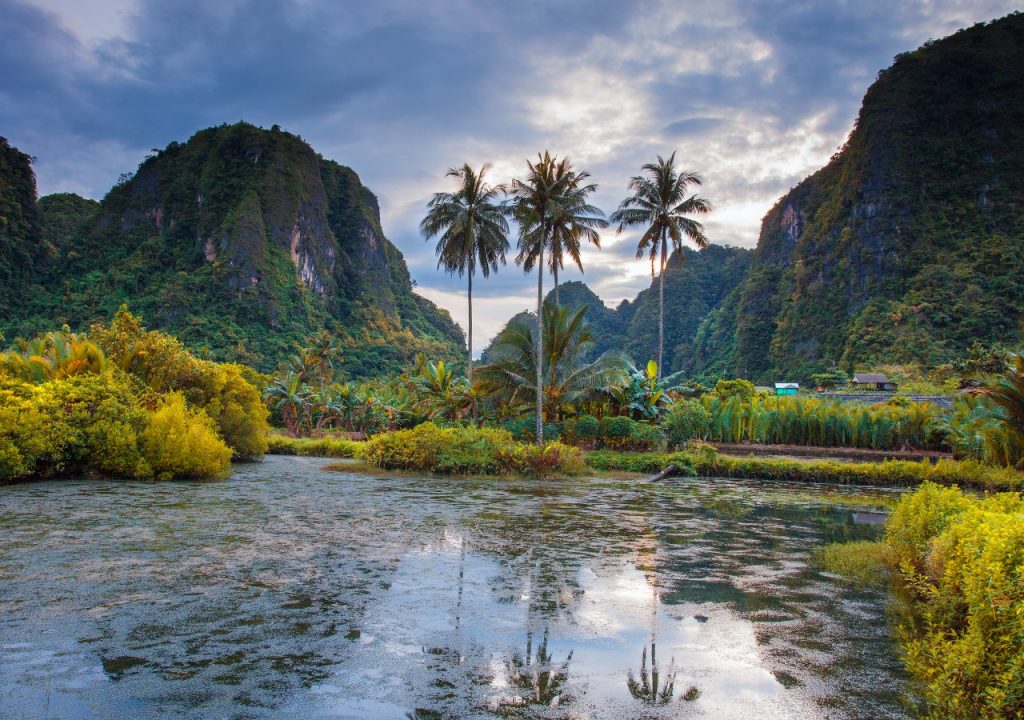
Being at the equator and due to its large size, the climate in Indonesia can never be accurately predicted. During the different months of the year in Indonesia, there will always be somewhere in the country where it is dry season and other places where it can rain more intensely.
On the following Indonesian precipitation maps, you can compare the climate in the different areas of the country during the months of January, April, August and October. In areas where the green color is more intense, it means it’s rainier, and on the contrary, the redder and darker, the drier.
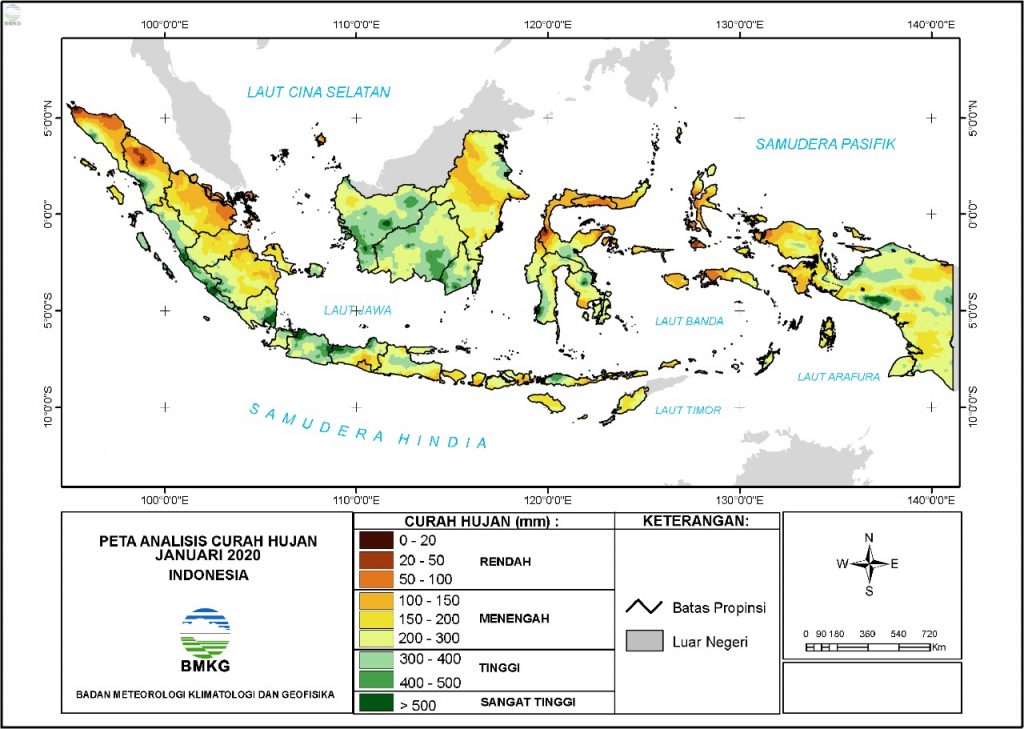
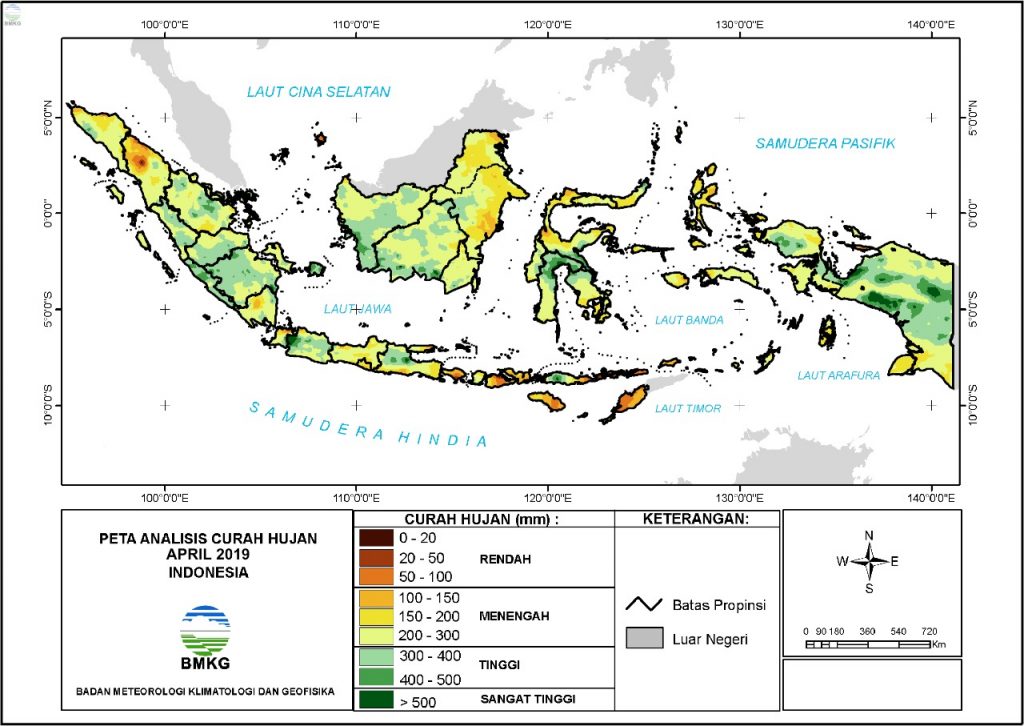
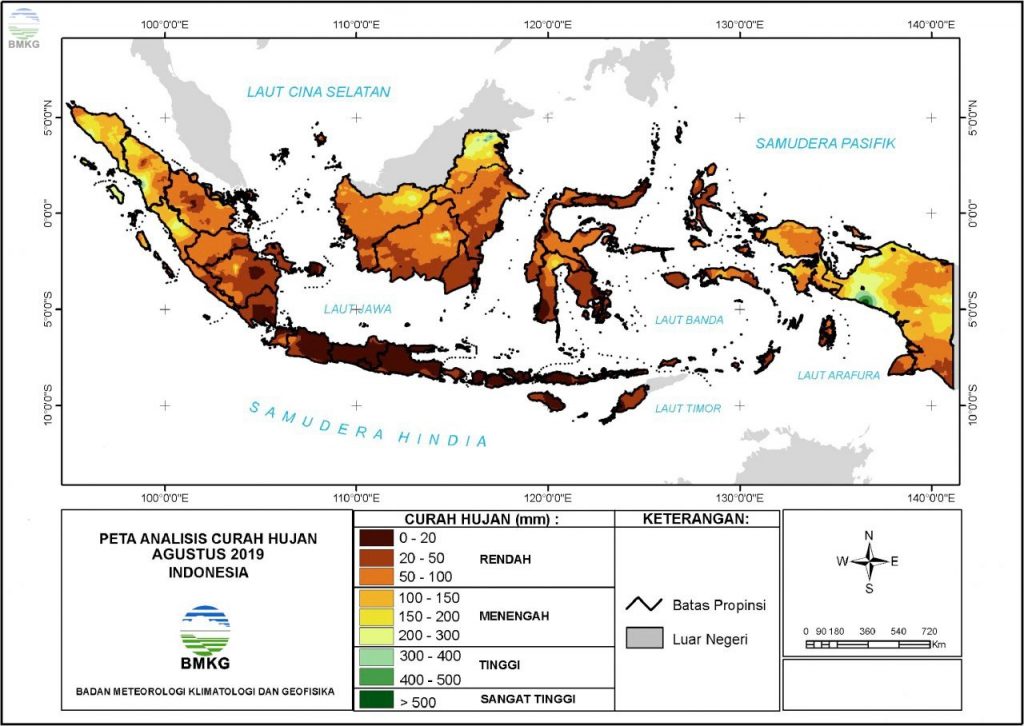
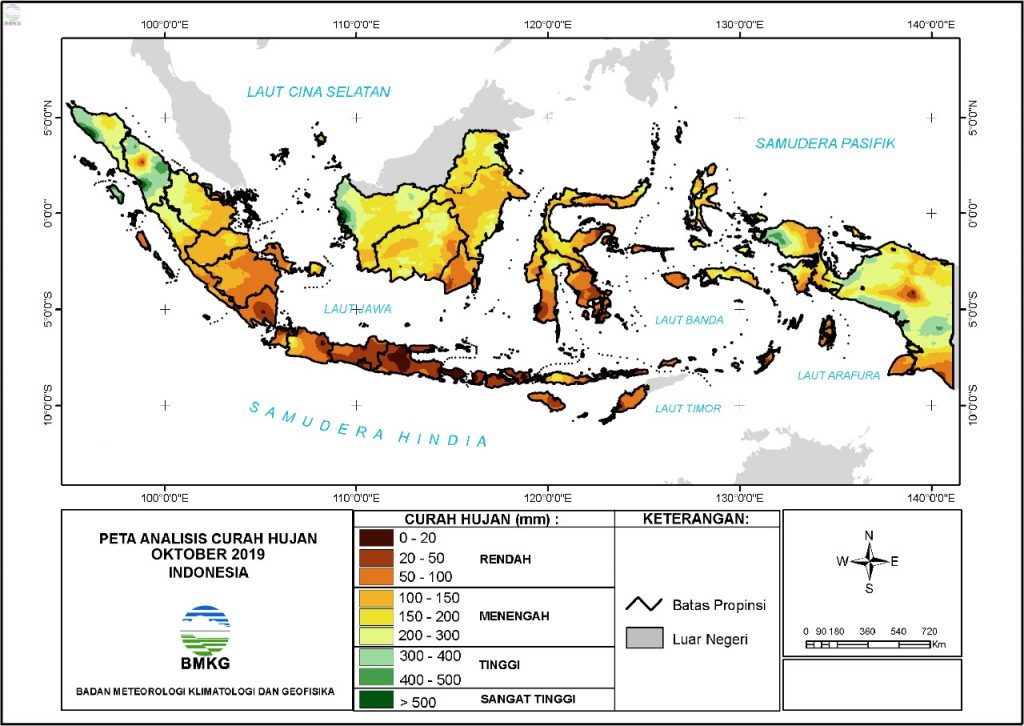
To give you a better idea of the best time to travel to Indonesia, here’s what Indonesia’s average climate is usually depending on the month of the year we’re in.
During January, rains often spread throughout Indonesia, and while it’s hard to find some sun, you can still get lucky at this time of year. As I mentioned above, the rains are very intermittent, and usually last only several hours a day. To ensure sunlight, it is best to head towards the areas further north of Indonesia.
The sun rises again in the north of Sumatra, where the rain begins to become less constant. However, the rest of Indonesia remains under rain clouds. Closer to the end of the month, the rains begin to decrease and temperatures hover around 30C.
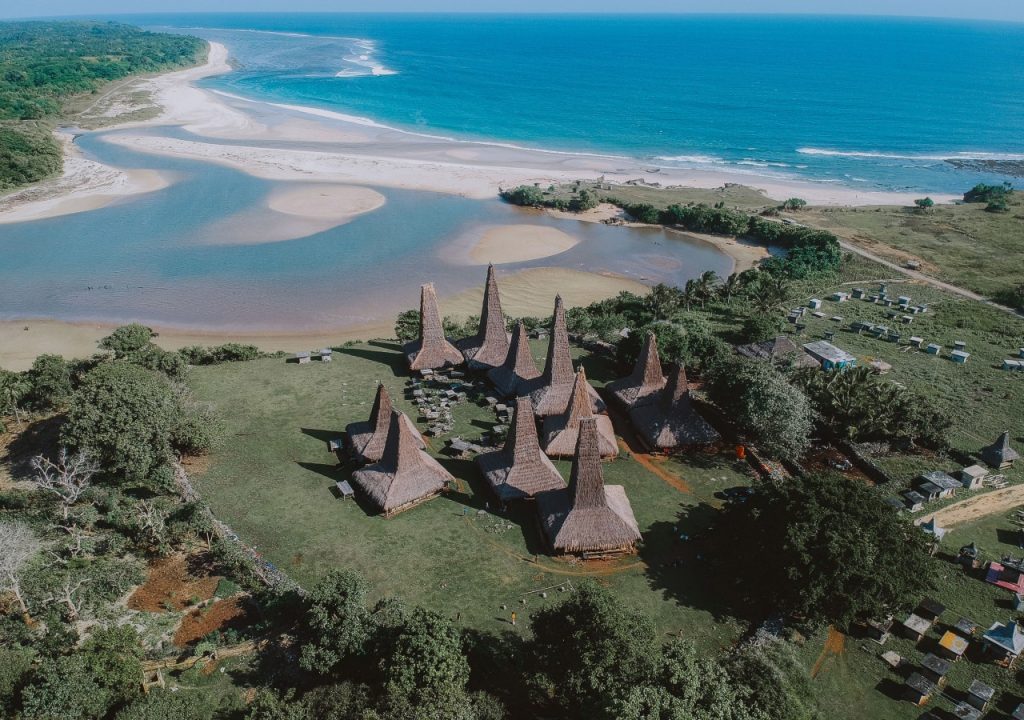
During the month of March, there is a mixed climate throughout Indonesia, as the sun stops shining at times due to occasional rainfall. That said, you may still be able to get some low-season deals.
The sun returns to most of Indonesia, and Sumatra still sees it rain a little in the afternoons. Towards the end of the month, the influx of tourists in Indonesia began to increase considerably.

Bali and Lombok enjoy some of their best days of the year, and beach lovers flock to their shores, making the most of splendid sun and blue skies. The rest of Indonesia continues to see a warm and dry weather at all times, although it is to be expected some storm from time to time in some areas.
This is a good time to see the orangutans when they go out to play in the woods, and you may be able to take advantage of some of the seasonal promotions.
Possibly, early June is one of the best times of the year to travel to Indonesia. Traveling on these dates, you will avoid matching European school holidays and enjoy good weather most of the time.
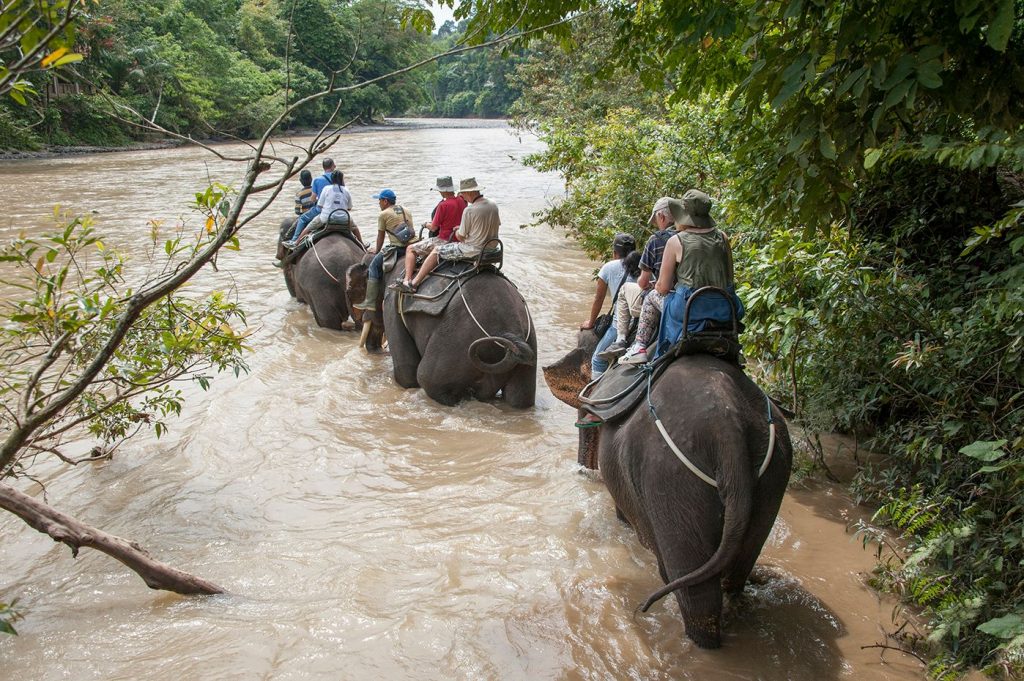
It is full of high season and all of Indonesia experiences a warm and dry climate.
With school holidays in full swing and the sun shining consistently, accommodation tends to be booked well in advance and the most popular beaches can get a little crowded at peak times. Humidity is usually quite strong in areas like Kalimantan.
The high season continues in Indonesia and during the month of August there are even more tourists than in July; with good weather, full wildlife and highly demanded national parks and tourist attractions… don’t forget to book ahead to avoid disappointment!
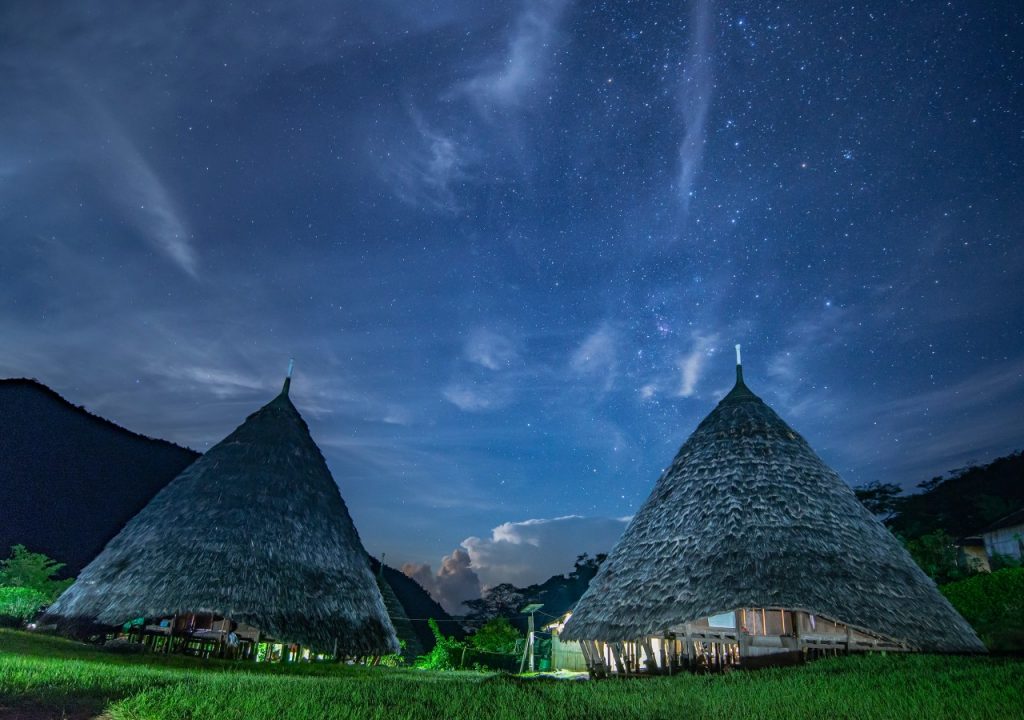
The month of September has the same favorable weather conditions as August, but with less the crowds and high season prices, so it’s a fantastic time to travel to Indonesia.
During the month of October you will enjoy the last rays of sunshine before the rainy season begins in Indonesia.
Warm, sunny weather still dominates most of the region, although regular rains can be expected in some areas, worsening in intensity as the month progresses.
North Sumatra, in particular, experiences one of its wettest months, which can affect roads.
This can be a good time to get a seasonal deals.
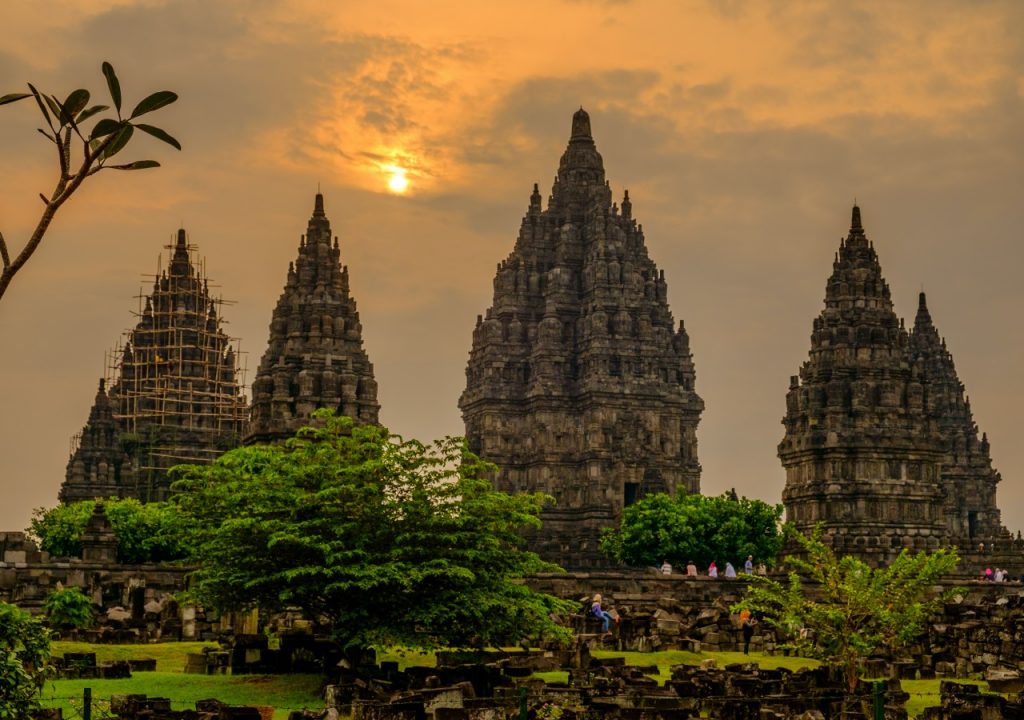
The rains return constantly to most of Indonesia, but as always, you may enjoy some occasional sun rays; particularly in Bali and northern Sulawesi.
Temperatures still average around 30C in most areas. Rains can cause road conditions to be affected and moisture can become sweltering.
During the month of December, you are likely to experience rain and high humidity levels throughout Indonesia. With Christmas prices just around the corner, it may be better to visit Indoonesia at the beginning of the month.

With more than 17,000 islands, one unique cultural diversity in the world, thousands of miles of jungles full of wildlife, innumerable paradise beaches and majestic volcanoes; Indonesia is one of the best vacation and adventure travel destinations in the world. So, if you’re planning your trip to Indonesia, it is important to know the best time to visit each of its different islands.
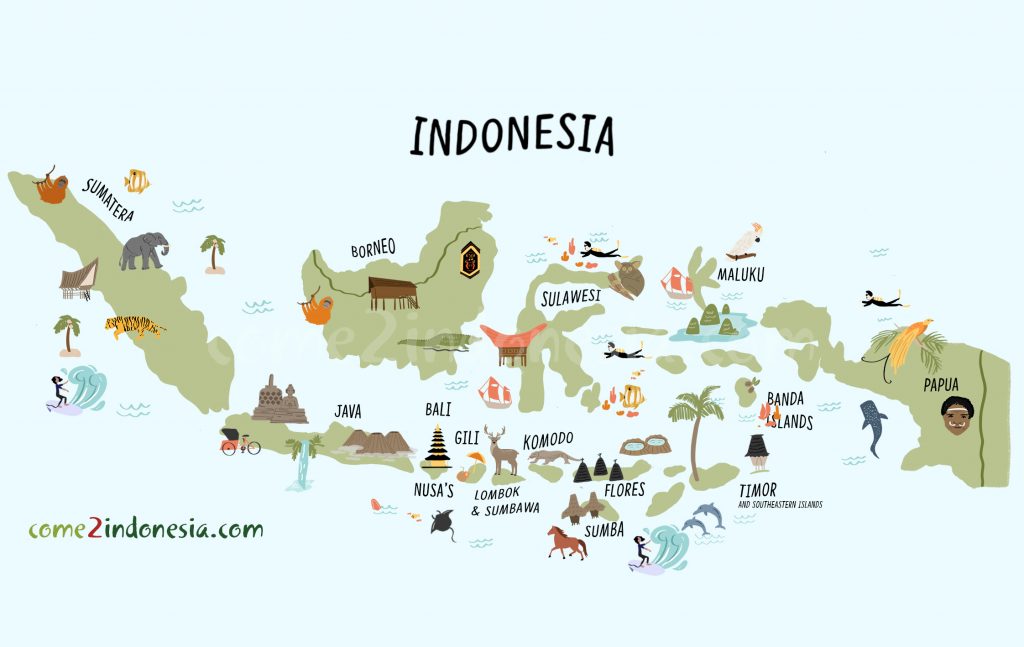
The best time of year to visit the island of Java is during the dry season, which extends from May to September, when the days are hot, dry and sunny. These months are also an ideal time to travel if you plan to visit the volcanic mountains of Bromo or Ijen.
The rainy season on the island of Java takes place from November to March, although East Java experiences less rainfall than western regions. During this season, the days are characterized by regular and intense rains that tend to last a couple of hours.
Temperatures are consistently warm throughout the year, with average daily temperatures hovering around 28-30C, although temperatures are cooler in higher mountainous regions such as Mount Bromo, especially at night.

Sulawesi has a somewhat peculiar climate, as it experiences different weather conditions depending on the area of the island you are on.
In Toraja and the southern part of the island, the rainy season takes place between November and April. In contrast, cities such as Manado and the northern regions experience rains all year round, with the driest months between July and October.
As for the temperature, it can become very sweltering on the coast, with maximum temperatures of 34C, going down to 24C in the hills of central Sulawesi.

Due to the large size of the island of Borneo (the third largest island in the world), Kalimantan’s climatic conditions vary slightly in different areas of the territory. The southern regions are the driest, and the rainforest-filled inland areas are predictably the wettest.
Kalimantan has a light rainy season from March to May, with stronger rains falling between November and January. However, in general, rainfall in Borneo tends to be milder than on other neighboring Indonesian islands, such as the island of Java.
The dry season extends from June to September, with August and September being the driest months of the year. Orangutans they can be seen in Tanjung Puting National Park all year round, although during the rainy season they tend to be more elated, preferring to take refuge.
The temperature in Borneo ranges from the warm 23C at night to 33C during the day, and the hottest months are usually May and August.
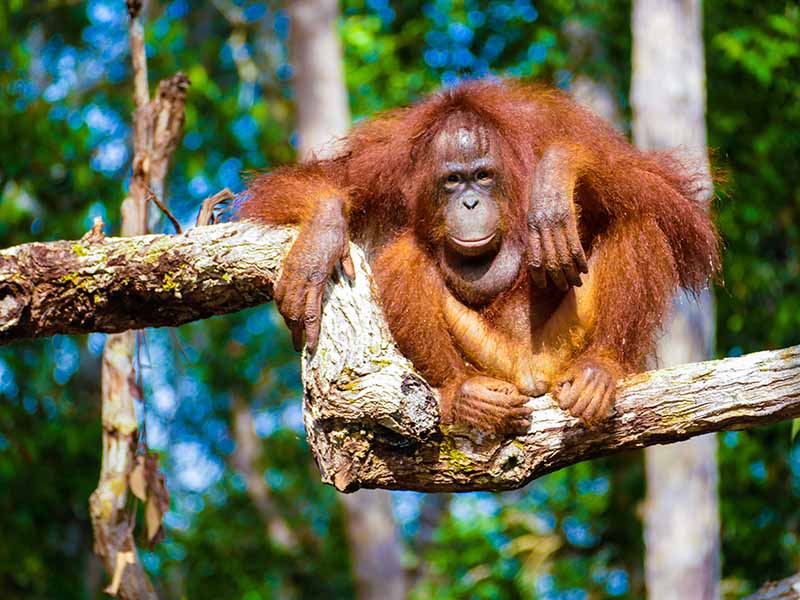
Sumatra is the 6th largest island in the world and the largest island in Indonesia. It is divided by the equator, so weather conditions vary slightly throughout the island.
Medan and North Sumatra have a more tropical climate with the possibility of rains throughout the year, especially in jungle-covered areas such as Bukit Lawang. The largest rainfall in the north is usually between the months of October and January.
Palembang and South Sumatra have a much more defined wet and dry season. With a drier climate during the months between April and October and precipitation from November to March.
The average temperatures hover around 27-28C throughout the year, although the maximum temperatures of 33-34C are quite common during the driest summer months.

The islands of Nusa Tenggara, including Lombok, the Gili Islands, Flores and Sumba, usually have the dry season during the months between April and September, with plenty of sun and blue skies. These months are an ideal time to travel if you plan to climb Mount Rinjani or dive on the Lombok coast, Gili Islands and Komodo National Park.
The wet season is usually between October and March, being November, December and January are the ones that record the most rainfall.
Like the neighboring island of Bali, the average temperature is quite constant throughout the year in the Nusa Tenggara Islands, ranging from 27 to 29C.
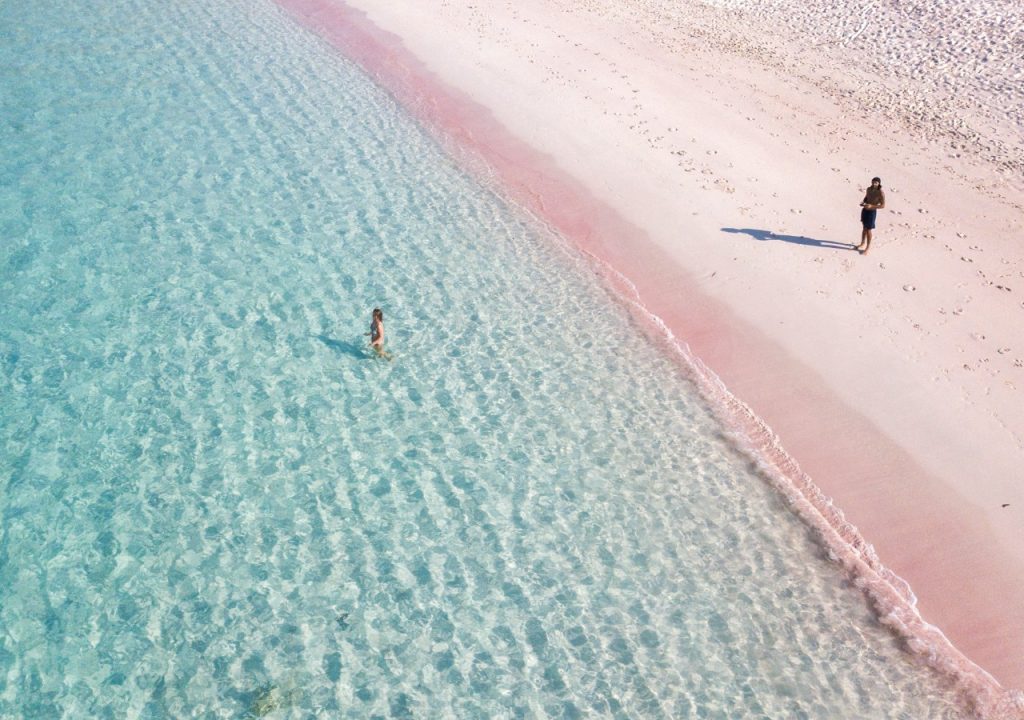
The islands of Raja Ampat and West Papua can be visited all year round, as there is really no low season.
In Raja Ampat, daily temperatures range from 30C to 34C throughout the year and rarely fall below 10C at night. The ocean is also warm all year round.
In the Wamena highlands and the Baliem Valley, at an altitude of 2000m+ above sea level, temperatures are cooler and average between 20C and 25C throughout the year. You can expect a drop below 10C at night in Baliem Valley.
The rainy season on the islands of Raja Ampat differs quite confusingly from the rest of Indonesia. Between the months of June and September there is a higher chance of rain and strong winds can be expected; conditions not ideal for boat trips or diving.
In Baliem Valley, at high altitude, you can expect rains all year round, being the wettest months of the year May and June. However, rain in the region usually occurs in the form of short, strong rainfall rather than showers throughout the day.

The weather conditions on the central islands of Moluccas, Ambon and Seram differ from the rest of Indonesia.
Between the months of June and September, these islands experience rains, so it is better to visit them between October and May. Weather patterns on the southern islands of the Kei, Aru and Tanimbar, and the northern islands of Ternate, Tidore and Halmahera are similar to most of Indonesia. These islands are best visited between the months of May and September.

Bali’s dry season takes place during the months of April to September. At this time the island enjoys sunny days with blue skies.
The months of May, June and September are arguably the best time to travel to Bali. During these months the weather conditions are ideal, but the number of tourists is not at its highest peak, so the most popular areas of the island are not too crowded.
Bali’s wet season takes place between October and March. Tropical rains result in occasional showers for several hours a day.
The temperatures in Bali are quite constant throughout the year, ranging from 26C to 29C, although the central regions around Ubud and the mountains, such as Mount Batur, experience cooler temperatures and more rain than coastal regions.
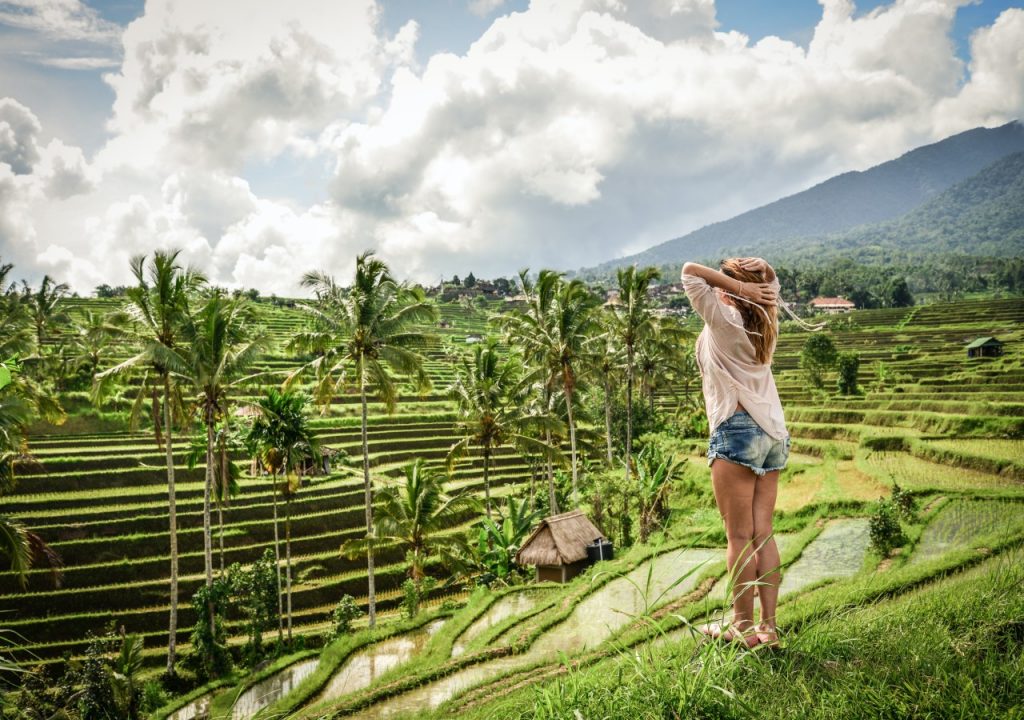
Don’t forget to visit our comprehensive Indonesia Travel Guide, where you will find all the information you need to travel to Indonesia!
Remember that you can also write to [email protected] if you need help planning your trip to Indonesia.
Taman Ayun Temple
Jatiluwih Rice Fields
Ulun Danu Temple
Tanah Lot Temple
West Bali
Kusamba Beach
Temple Goa Lawah
Kertagosa Palace
Balinese Hinduism
Bali, Island of Gods
Sustainable tour
Deluxe Boat
Tanjung Puting National Park
Local specialized crew
Night treking included
Sustainable tour
Our own boats
Tanjung Puting National Park
Local specialized crew
Night treking included
Sostenible Tour
Our own boats
Tanjung Puting National Parl
Local specialized crew
Nice atmosphere
Komodo dragons
Short and easy trekking
Snorkeling trip
One-night hotel stay
Full-board accommodation on boat
Born in Valencia (Spain), his professional career has always revolved around the tourism sector. He studied tourism degree and later specialized in digital tourism marketing.
After working in various travel agencies. In 2018, he was a beneficiary of an Indonesian government scholarship to study at one of the most prestigious universities in the country. After specializing in the destination and having traveled and lived in various areas of Indonesia, he joined our team in early 2020.
Fernando is passionate about surfing and extreme sports. He’s the first to sign up for a trip, always looking for new adventures!
SHARE THE POST WITH FRIENDS